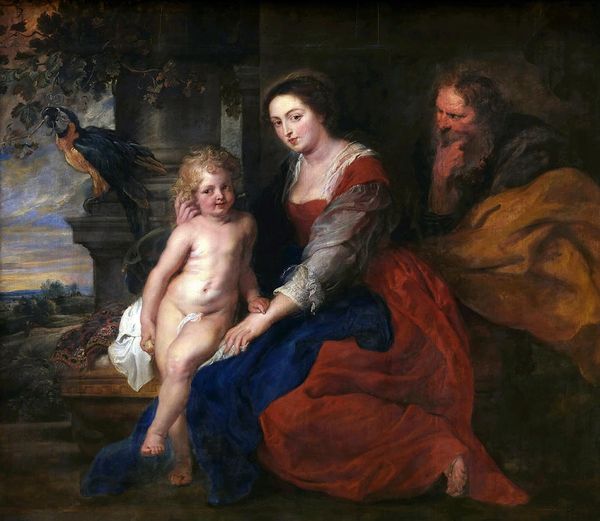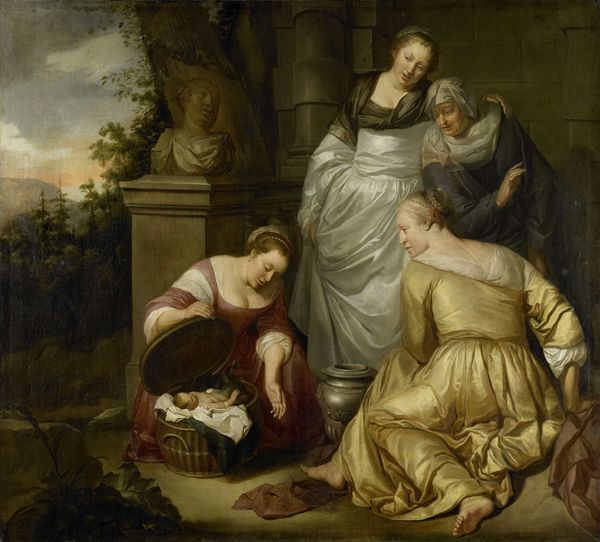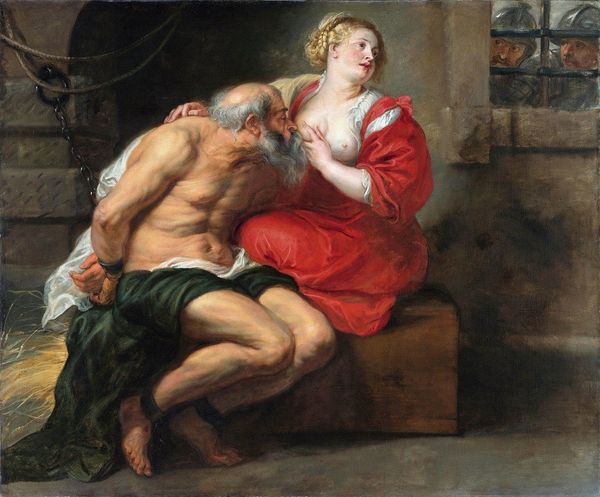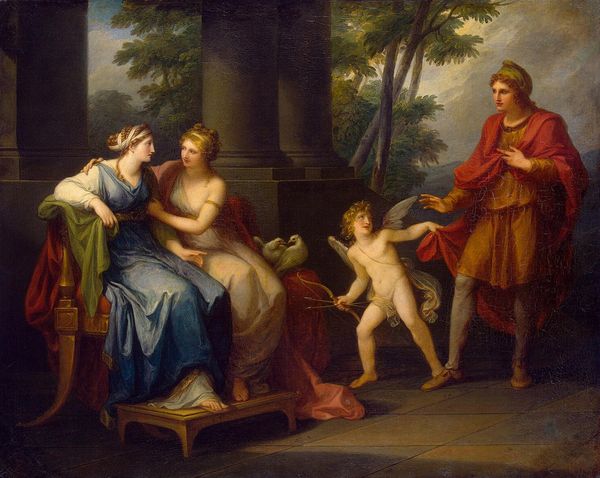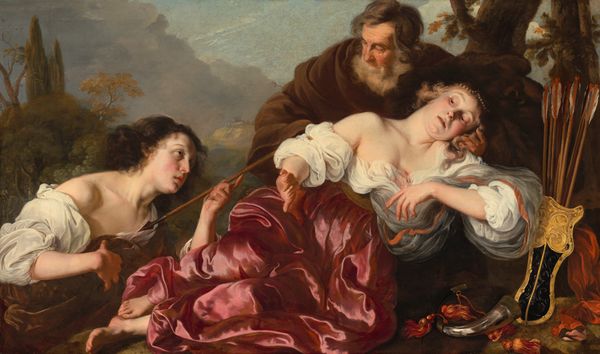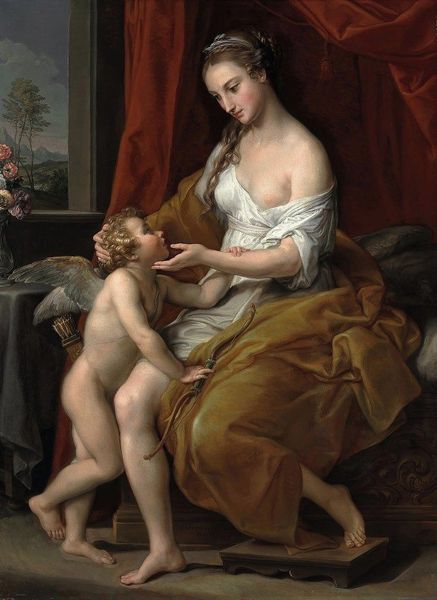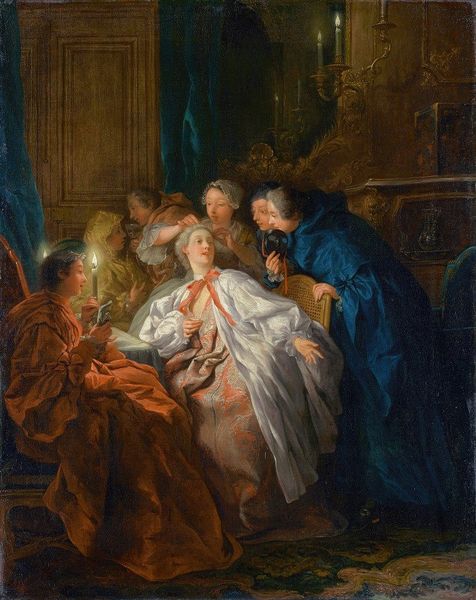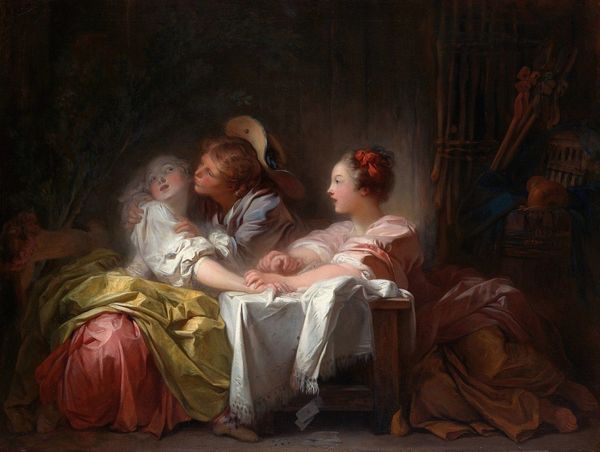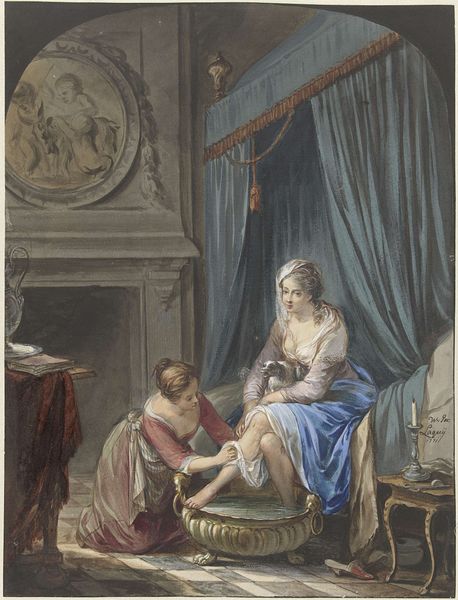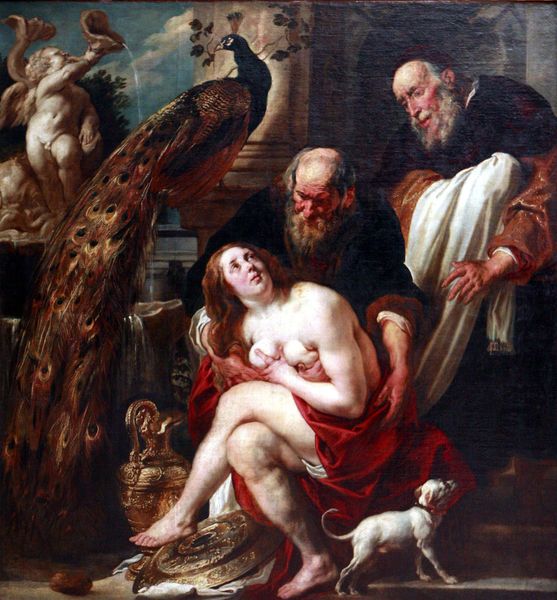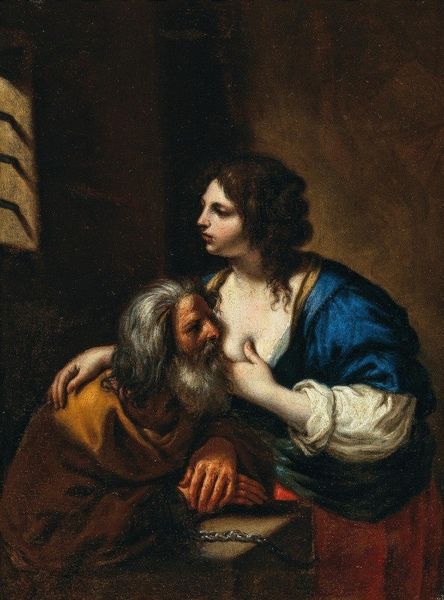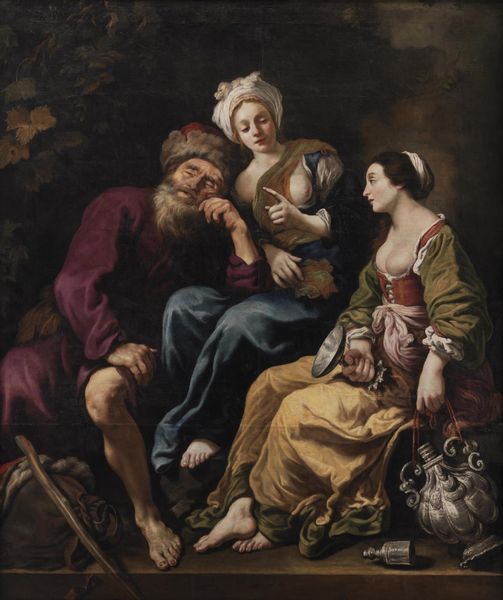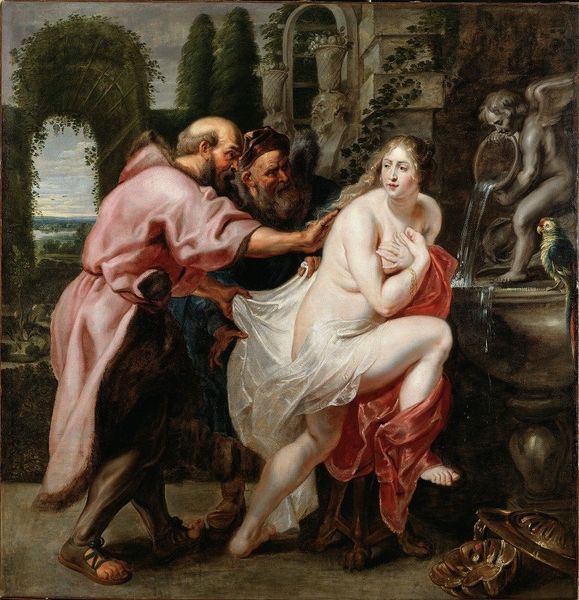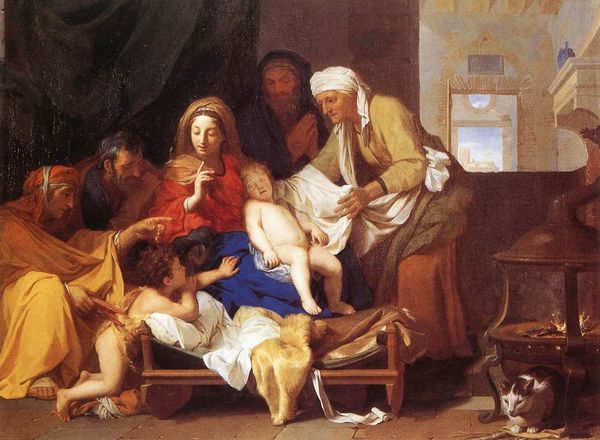
oil-paint
#
narrative-art
#
baroque
#
dutch-golden-age
#
oil-paint
#
figuration
#
classicism
#
genre-painting
#
history-painting
#
nude
Copyright: Public Domain: Artvee
Jan Steen painted Bathsheba After the Bath using oil on canvas in the Dutch Golden Age. Looking closely, we can see how Steen’s mastery of oil paint is crucial to this painting’s effect. Oil paint allowed for a remarkable level of detail and texture. Notice the smoothness of Bathsheba's skin, achieved through delicate brushwork and layering of translucent glazes. Then see how the artist conveys the weight and texture of the draped fabrics, or the cool surface of the stone fountain. In Steen’s time, the Dutch Republic was a major center of trade and commerce, and his choice of subject matter often reflected the values and concerns of his middle-class patrons. Oil paint itself was a commodity, and artists like Steen were part of a thriving market for luxury goods. The time and labor required to create such a painting would have been considerable, reflecting the value placed on skill and craftsmanship in Dutch society. By focusing on the materials and methods of production, we can gain a deeper understanding of the artwork and its cultural context.
Comments
No comments
Be the first to comment and join the conversation on the ultimate creative platform.
